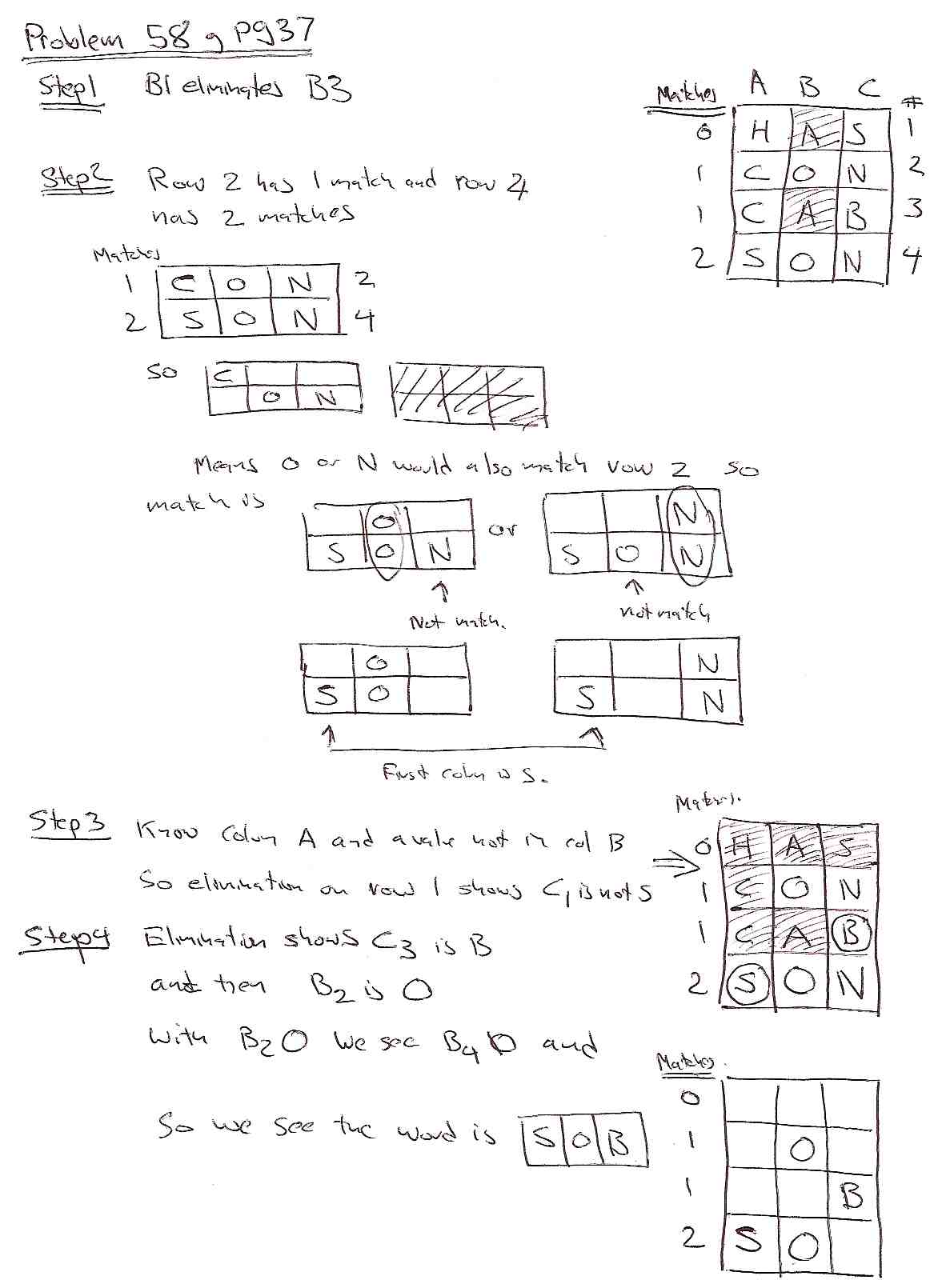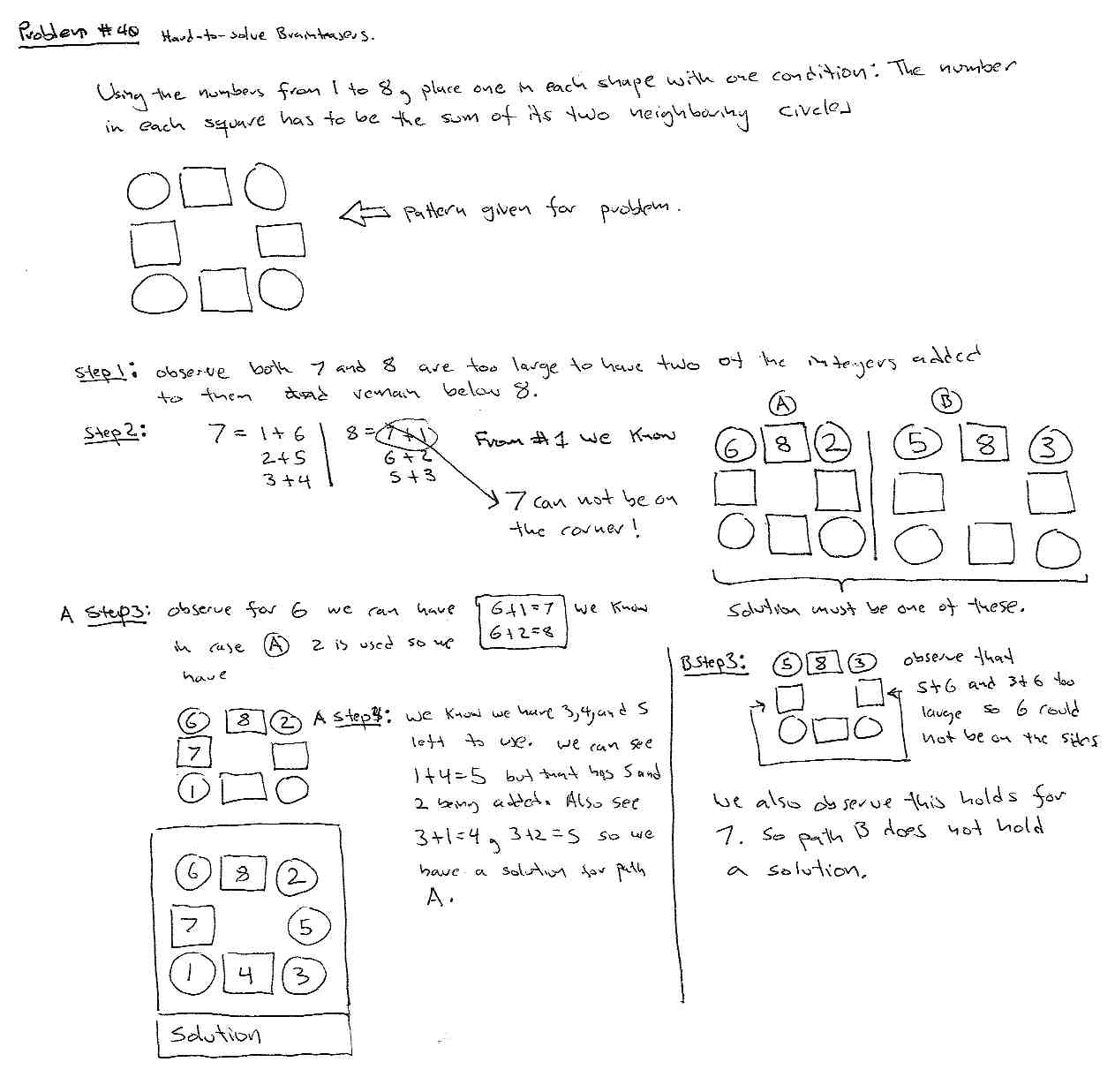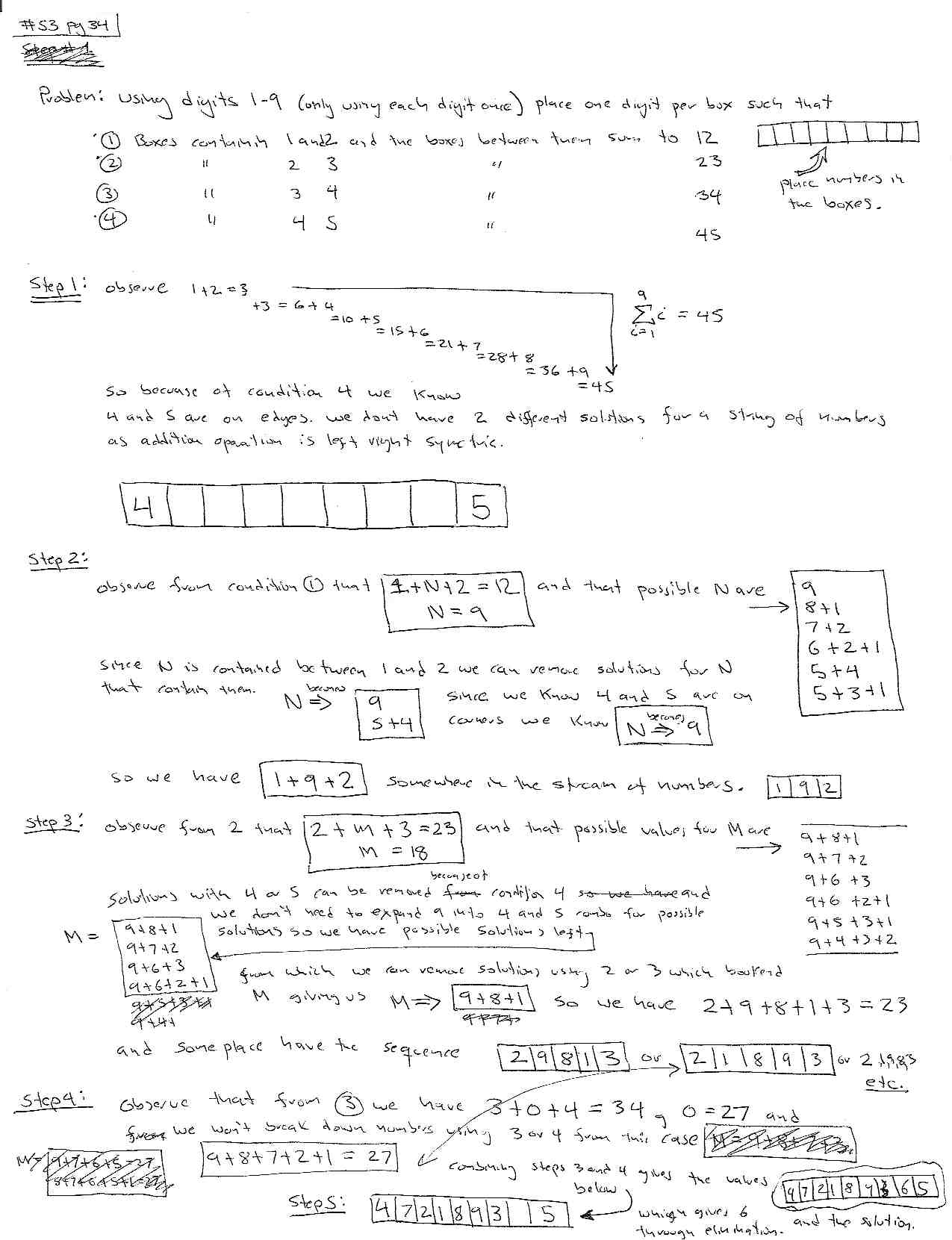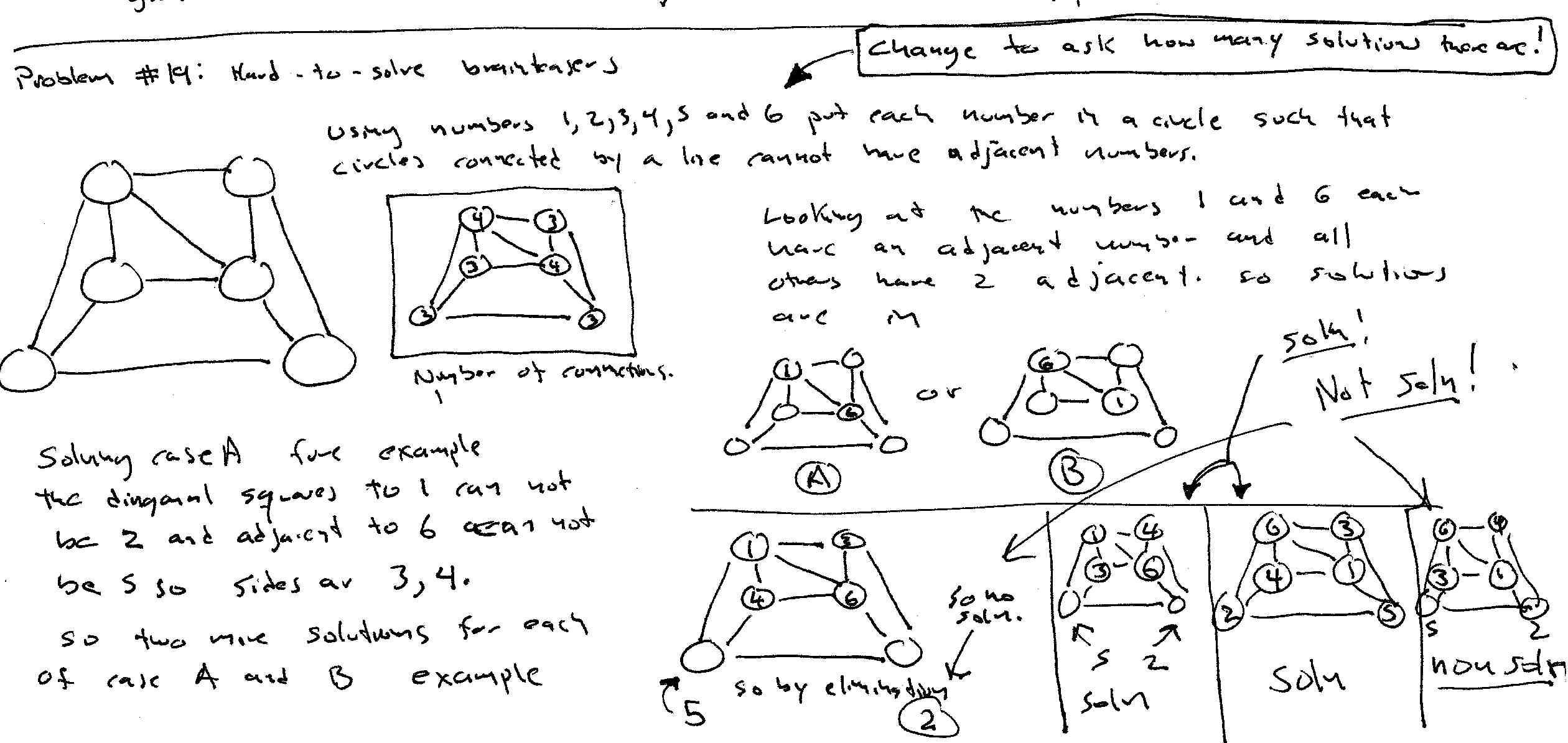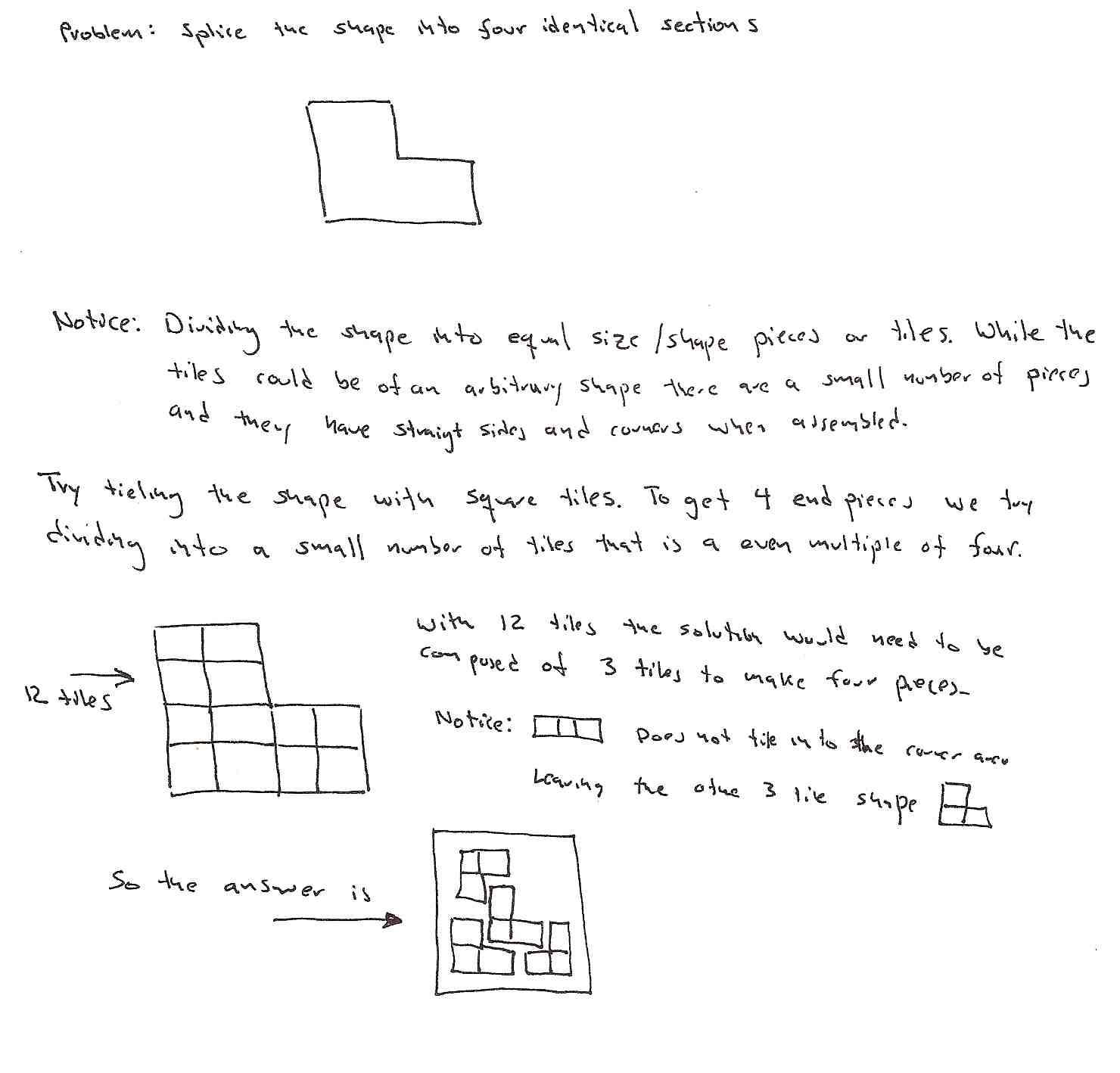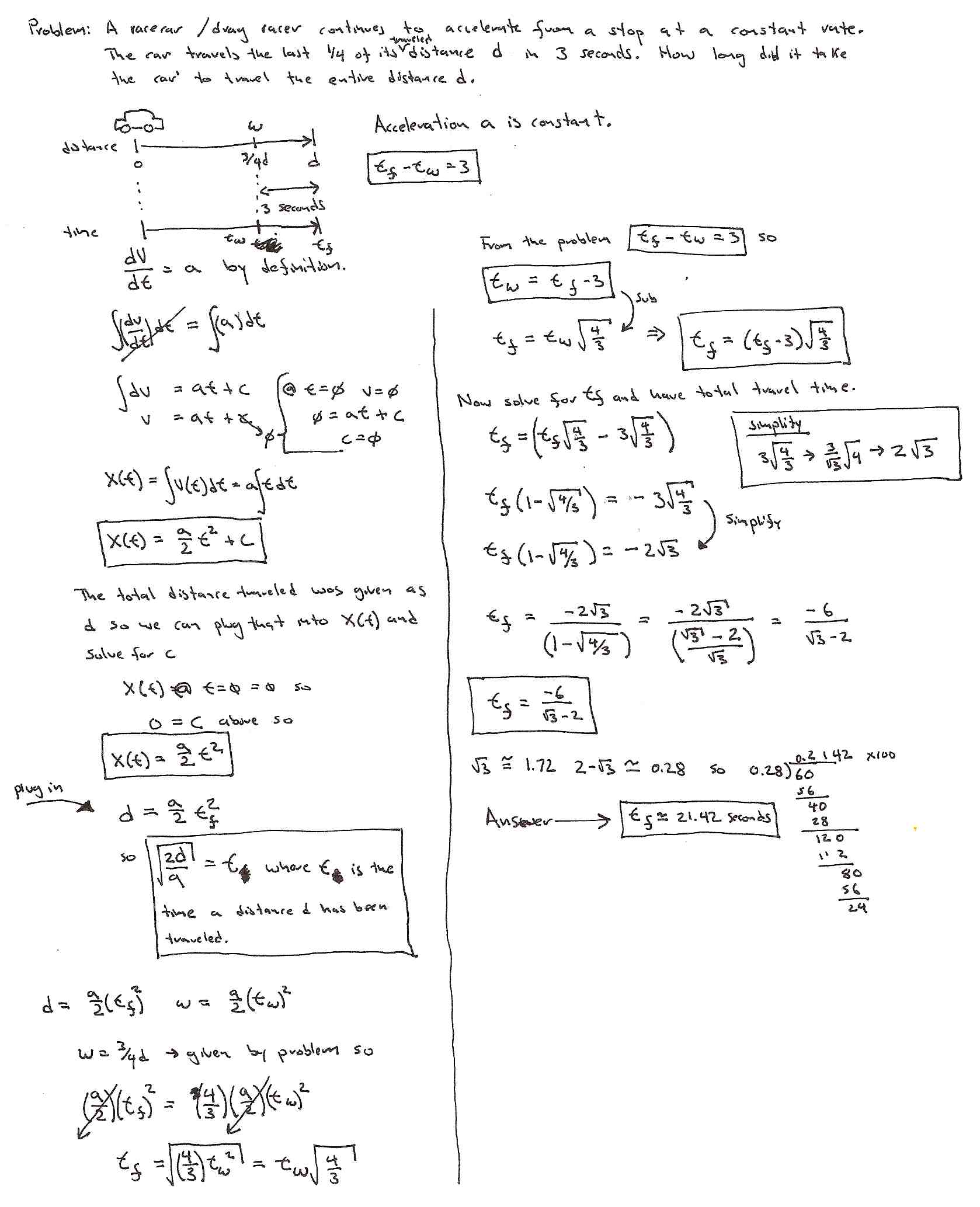I am a moron. Yup. I sat down and worked a 4×4 problem this morning only to prove it was impossible to solve. It helps if you copy the problem down correctly. Normally I am fairly anal about this type of error but I was writing out a detailed description of how to solve the problem and it spilled onto a second page. When copying over the current part of the problem… whoops. So I worked the next problem in the book, this simpler 3×3 of the same type, and will only post one today. After all I need to get to work from the morning coffee break!
Ok, so while I like the reasoning this type of problem encourages – I don’t like it when the longer ones assume a thorough knowledge of English. Mostly, I don’t like relying on the English vocabulary because English has a loosely defined vocabulary that borrows words from all sorts of other languages. Working one of these problems I found several alternate answers with words I considered English but which were borrowed from other languages. I think I will also avoid them as students who do not have English as their first language would be discouraged from solving the problems.
The problem says you are looking for a 3 letter word. You are given four words. The first, HAS, has zero letters in the same location as the word you are looking for, the second and third words, CON and CAB, each have one match and finally the last word SON has two matches. What is the word you are looking for?
I think I will work the problems I find like this as they are – but then change the letters to combinations of symbols and colors when making new problems along these lines.
